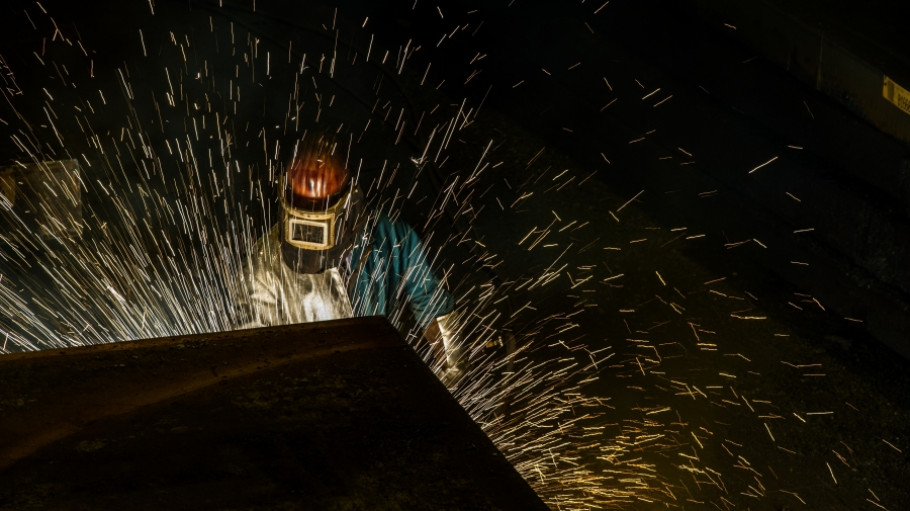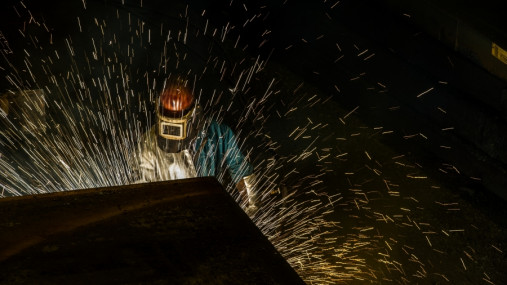
News » Annual Report 2020 published
Annual Report 2020 published
Downloads and links
Recent updates

EUROFER’s Annual Reports are an opportunity to look back at the preceding twelve months and examine the work of the European Steel Association (EUROFER). It also serves as a benchmark for the performance of the whole sector over that timeframe.
However, this edition’s release is overcast by its release coinciding with a pandemic – COVID-19. This means that as an analysis of 2019 it still provides an understanding of what the steel sector went through. However, as a guide to EUROFER’s future priorities, it is clear that what is written here today may be out of date by tomorrow.
2019 was already a difficult year for European steel. Even though the EU economy grew by 1.4% over the year, EU crude steel production dropped 6% to 157 million tonnes and apparent steel consumption fell by 5.3% to 154 million tonnes. Increasing trade tensions and a deterioration in the performance of key steel-using sectors – most notably in the automotive industry – underpinned a decline in demand for steel.
The decline in demand also precipitated a fall in imports of 11.5%. However, this is only a decline compared to the import record set in 2018, meaning import levels have returned to the level of the still high volumes seen in 2016 and 2017. However, this reduced figure hides significant market-destabilising volatility, and this instability has also undermined the functioning of the EU steel safeguard, even as the import quota has been raised continuously.
However, 2019 may well come to be seen as a prelude to an unprecedentedly difficult year in 2020. Previous EUROFER economic analyses had expected growth to return to the market in 2020, but with the advent of the coronavirus pandemic, the question regarding the performance of the steel sector this year is not a matter of asking: will it be bad? – it is a question of how bad can it get?
Provisional sectoral statistics collected by EUROFER during the coronavirus crisis suggest that during the acute phase of the lockdowns in March and April 2020 there was a collapse in steel demand, approaching 50% – and more, in certain segments. At the peak, nearly 45% of the workforce was either furloughed or on reduced time working. It is not clear how temporarily these setbacks are and how long it might take to recover from them.
At the same time, other regions also hit by the pandemic continued to produce for stockpiling, anticipating the recovery of third markets, such as the EU's. Low-ball offers at EU borders depress domestic prices even if they aren’t then followed by imported volumes. However, in the current conditions of stalled local production and the availability of imported substitutes there is a non-negligible risk of imports absorbing most or all resurgent steel demand, once it comes.
It is clear that the European steel industry is in a very precarious a position, at least in the near term. The steel sector – along with its value chains – must be supported today and empowered to contribute to the recovery. In practice, this means EU leaders must sharpen every available policy tool, even if they were not in principle designed with the specific purpose of economic recovery in mind.
To some extent, the EU has already been working to achieve this: the spate of State Aid approvals in the first half of 2020 attest to the understanding that EU companies need emergency support during this crisis. Shifted interpretations of foreign direct investment rules highlight the fact that policy makers appreciate that there are global players that would be terribly eager to acquire momentarily distressed assets at fire-sale prices. The recovery action plan developed by the Commission also seeks to set the European economy back on its tracks once the peak of the pandemic has passed. However, this approach has not been taken to its logical conclusion, most notably in trade policy. There are lawful trade measures available that could be deployed in these emergency circumstances that would ensure the already weakened market is not overrun with by a flood of imports when steel demand picks up again. Steel is an intensively traded product – one for which volume and price volatility at the border is immediately echoed in domestic market conditions. The EU should be unafraid to sharpen its trade defence tools, especially as global competitors are prepared to do whatever it takes to penetrate the market.
The multilateral trading system is weaker than it has been at any time in the post-war period. Increasingly, regions are playing off against each other. And it is Europe – and European steel – that stand to be worst hit in these circumstances if the EU doesn’t act. EUROFER will continue to offer support and make clear its recommendations in this respect.
The EU and industry must work together to overcome the pandemic-induced economic disaster in the short term, so that our sector and related value chains can help contribute to the recovery. We are still in the early days of this crisis, and there is still time to ensure that the EU and its industry rises stronger, cleaner and greener than before.
We hope that you enjoy reading the EUROFER Annual Report 2020.

Download files or visit links related to this content
Brussels, 22 March 2024 – The future of a strong and resilient EU can only be forged with steel made in Europe. Europe-made low-carbon steel has a strategic role as it enables a net-zero economy, but today it faces strong headwinds from high energy prices, unfair competition, global overcapacity and growing unilateral carbon costs. The year 2023 has recorded the lowest European crude steel production levels ever, with a number of idled plants and dire impact on workers. Ensuring the enabling conditions for the short-term viability and the decarbonisation of the steel sector urgently needs to be at the top of the EU agenda. This is the message delivered by the European Steel Association together with a number of high-level representatives of the sector on the occasion of the Clean Transition Dialogue on Steel in the presence of the Executive Vice Presidents of the European Commission, Maroš Šefčovič and Margrethe Vestager.
Uses, limits, and realistic potentials of demand-side response from the European steel industry along with a broad set of framework recommendations for an EU policy
Antwerp, 20 February 2024 – Today 73 industry leaders spanning almost 20 industrial sectors presented ‘The Antwerp Declaration for a European Industrial Deal’ to Belgian Prime Minister, Alexander De Croo and Commission President, Ursula von der Leyen. The declaration underlines the commitment of industry to Europe and its transformation and outlines urgent industry needs to make Europe competitive, resilient, and sustainable in the face of dire economic conditions.